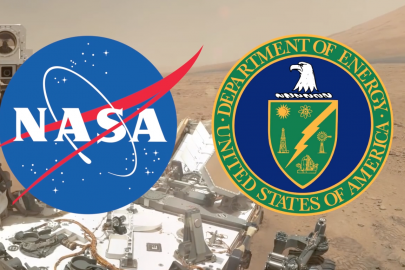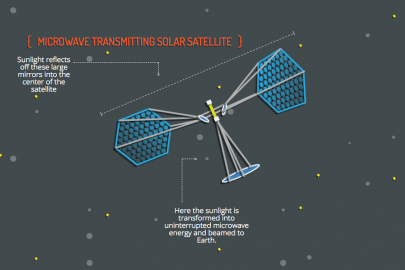A farewell tribute to NASA's Cassini spacecraft, which was powered by plutonium from the Department of Energy.
September 15, 2017After nearly two decades in space and billions of miles traveled, Cassini’s journey is finally over.
When the pioneering NASA spacecraft met its end in Saturn’s upper atmosphere the morning of Sept. 15, 2017 (Earth Received Time), burning up in a fireball of silicon and metal, the last components to disintegrate were some of its most essential: pods of exceedingly rare and vital nuclear fuel that made the mission possible.

Environmental Health Specialist Jamie Keeley uses an ion chamber dose rate meter to measure radiation levels in one of the 3 radioisotope thermoelectric generators (RTGs) that provide electrical power to the Cassini spacecraft.
Those components were the iridium-clad pellets of plutonium-238 developed by the Department of Energy decades ago. Contained within three cylindrical power sources called radioisotope thermoelectric generators (RTG), they produced the heat and electricity that kept Cassini on track and responsive throughout its long journey.
RTGs are lightweight, compact spacecraft electrical power systems that have flown successfully on 23 previous U.S. missions over the past 37 years. Cassini’s RTGs contained plutonium from the Department of Energy’s Savannah River Site in Aiken, South Carolina. The iridium cladding around that precious nuclear fuel was produced by Oak Ridge National Laboratory and the Y-12 National Security Complex.
Cassini launched on Oct. 15, 1997, with the European Space Agency’s Huygens probe. Named after astronomers Giovanni Cassini and Christiaan Huygens, the pair of spacecraft reached Saturn in 2004 after a 2.2-billion-mile (3.5-billion-kilometer) voyage. In 2005, Huygens was deployed to the surface of Saturn’s largest moon, Titan.

At Cape Canaveral Air Station, workers install 3 (RTGs) on the Cassini spacecraft. RTGs enable spacecraft to operate at significant distances from the Sun where solar power systems would not be feasible.
Over 20 years and two mission extensions, Cassini produced countless key discoveries about Saturn, its rings, and its moons, like liquid methane seas on Titan and a global ocean with indications of hydrothermal activity on Enceladus. Its findings expanded our understanding of the kinds of worlds where life might exist.
Although the spacecraft may be gone, the treasure trove of data it collected about Saturn — the giant planet itself, its magnetosphere, rings and moons — will continue to yield new discoveries for decades.
And with the Department of Energy working to produce new nuclear fuel for future space missions, Cassini’s legacy of exploration will be carried on by new spacecraft for generations to come.
Since the late 1980s, Oak Ridge National Lab has been producing clad vent sets for NASA. Made from iridium, they house the plutonium-238 fuel used for deep space missions.
NASA's Jet Propulsion Laboratory is working with the Department of Energy on ways to make the next generation of radioisotope power systems even more powerful and capable.
Matt Dozier
Matt Dozier works in the Office of Nuclear Energy's Office of Communications and Engagement, where he serves as a Communications Specialist creating digital content to promote NE’s diverse array of projects and programs. Matt comes to NE from DOE Public Affairs, where he spent eight years telling the Department’s story through Energy.gov, social media, and Direct Current — the agency’s award-winning flagship podcast. Previously, he supported outreach and communication efforts at the NOAA Office of National Marine Sanctuaries.





